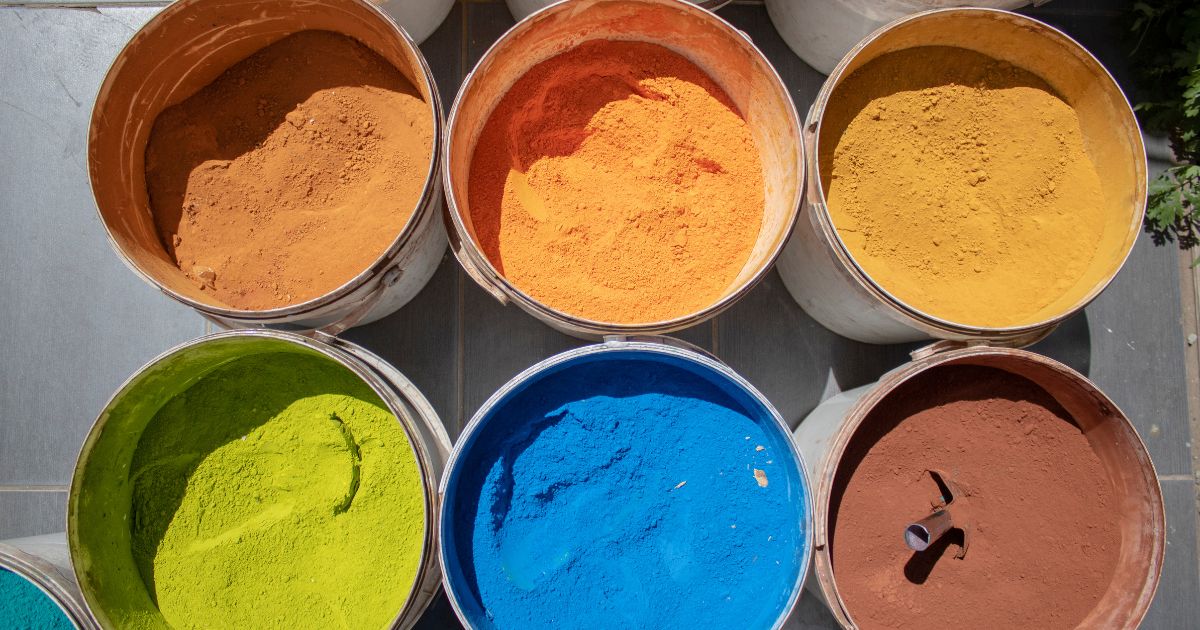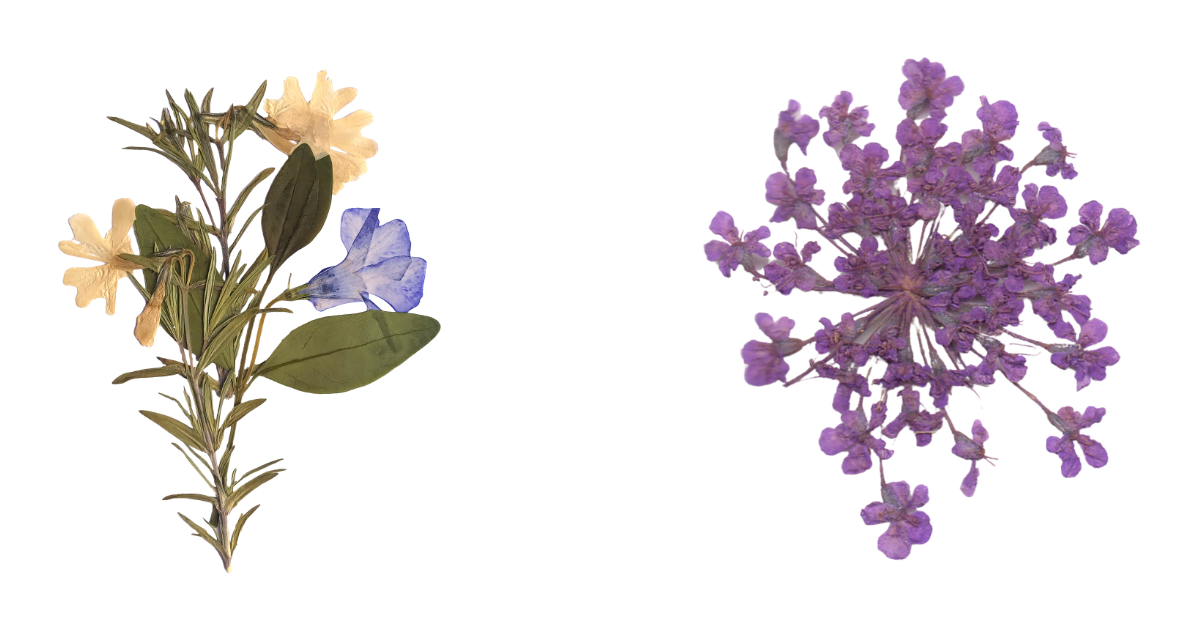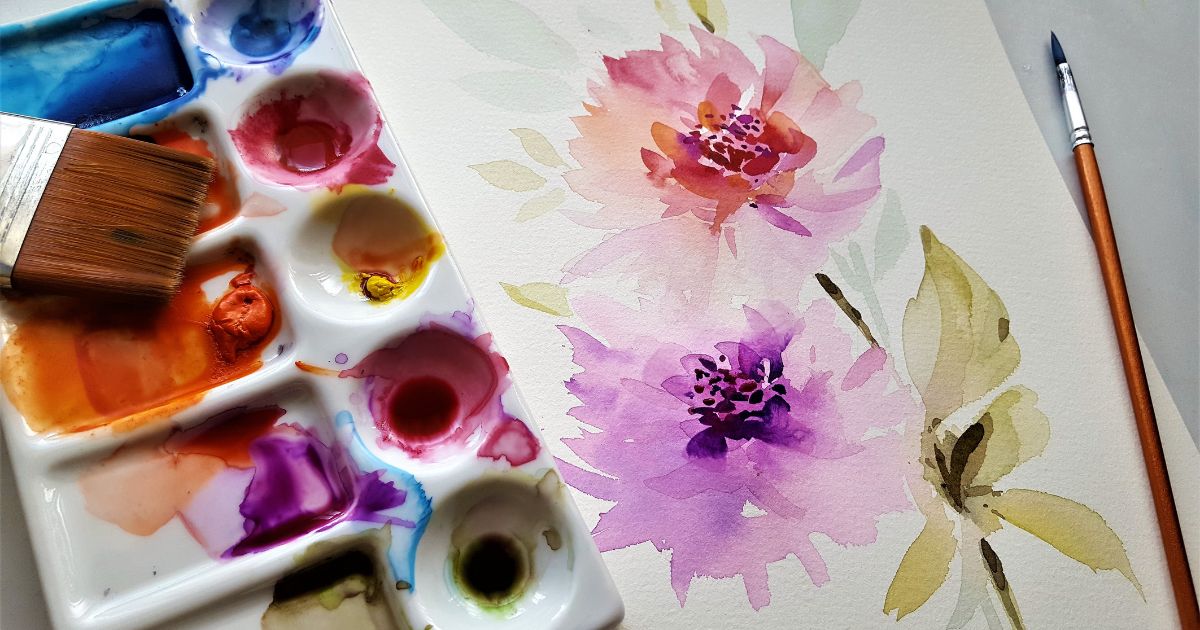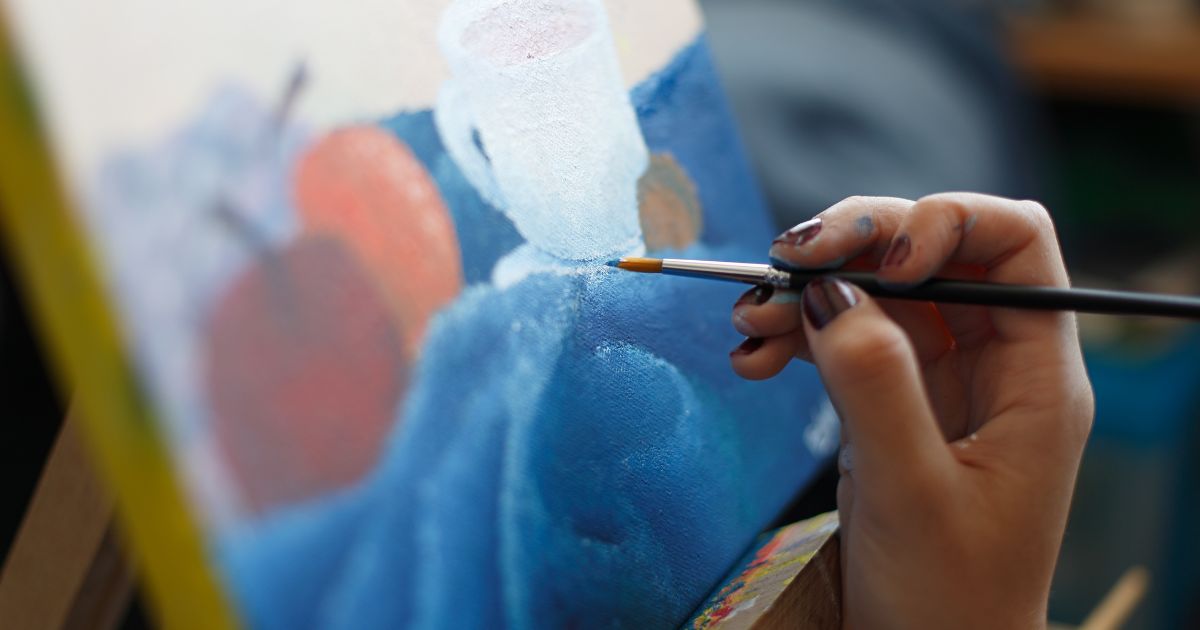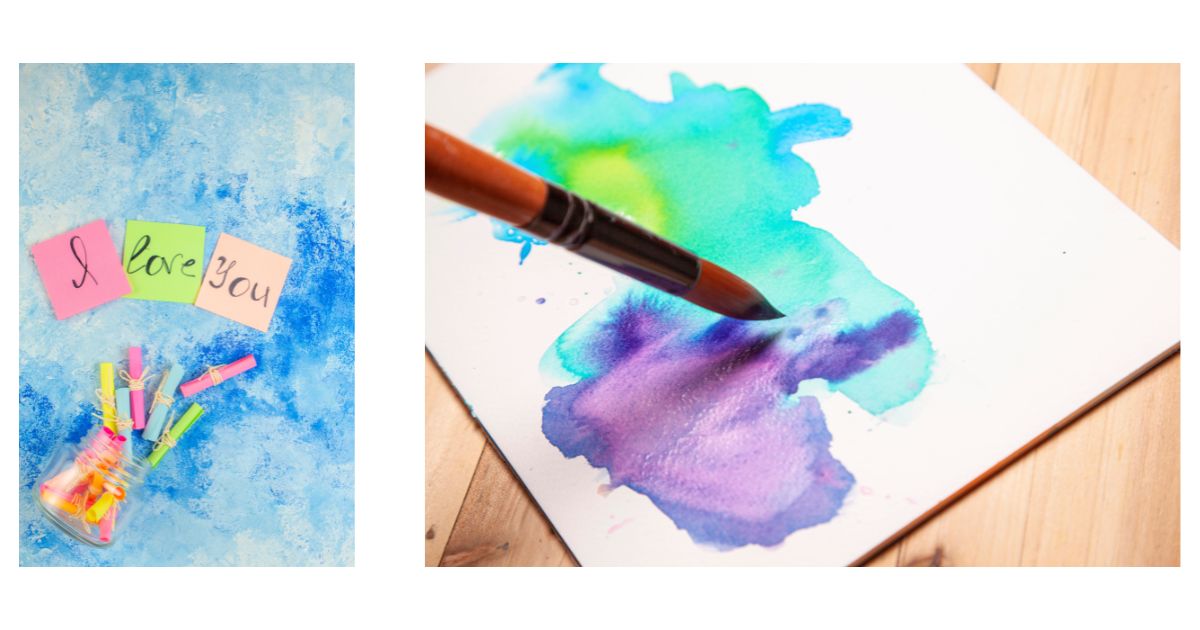Ink is a liquid or paste that contains pigments or dyes and is used to color a surface to produce an image, usually on paper. Watercolor is a type of painting in which the paints are made of pigments suspended in water-based solutions.
Ink and watercolor are two very different mediums, each with its own unique properties. Here is a quick rundown of the key differences between them: Ink is a liquid that dries quickly, making it ideal for detailed work.
Watercolor, on the other hand, is a paint made from pigment and water that dries slowly, allowing for softer edges and more interesting effects. When working with ink, you can build up layers to create depth and richness of color. With watercolor, each layer is more transparent than the last, so it’s difficult to achieve the same level of opacity.
Ink can be applied directly to paper or other surfaces, while watercolor must be diluted with water before painting. Ink is permanent once it dries, while watercolor can be reactivated with water even after it has dried. This means that mistakes are easier to correct when working with watercolor.
Overall, ink is better suited for precise lines and detailed work, while watercolor allows for more experimentation and creativity. So choose the medium based on the type of project you’re working on!
Watercolor VS India Ink ☾ Painting Pros + Cons
What is Watercolor Ink
Watercolor ink is a type of ink that is specifically made for use with watercolors. It is usually made from a pigment and a binder, and sometimes other ingredients like surfactants or dispersants are added to help with the flow of the ink. Watercolor inks are generally transparent, so they can be layered on top of each other to create different effects.
How to Use Watercolor Ink
Watercolor ink is a type of ink that can be used to create watercolor paintings. The ink is made from pigments that are suspended in a water-based solution. When the ink is applied to paper, the pigments will spread out and create a watercolor effect.
To use watercolor ink, you will need some supplies including watercolors, brushes, paper, and a container of water. Start by wetting your brush with some water and then dipping it into the color you want to use. Apply the color to the paper using light strokes.
You can add more color or dilute the color by adding more water. Experiment with different techniques to see what effects you can create. When you are finished painting, let the artwork dry completely before framing or displaying it.
Best Watercolor Ink
When it comes to watercolor inks, there are a few things you need to consider. The first is the type of paper you’re using. Watercolor paper is different from regular drawing or painting paper because it’s made to absorb more water.
This means that if you use too much ink, your painting will start to look wet and soggy. The second thing to consider is the brand of ink you’re using. Some brands are better than others when it comes to watercolors.
You’ll want to experiment with a few different brands before settling on one that you like. Finally, consider the price of the ink. Watercolor inks can be expensive, so you’ll want to make sure you’re getting a good deal before purchasing any.
Now that you know what to look for in watercolor ink, here are some of our top picks:
- Daniel Smith Watercolor Ink: This ink is great for both beginners and experienced painters alike. It’s available in a variety of colors, so you can find the perfect shade for your project. Plus, it’s affordably priced without sacrificing quality.
- M Graham Watercolor Ink: If you’re looking for an intense color palette, this is the ink for you. M Graham offers a wide range of vibrant colors that will make your paintings pop. However, their inks are on the pricier side, so be prepared to spend a bit more money on this brand.
Watercolor Vs Gouache
There are a few key differences between watercolor and gouache that you should be aware of before deciding which medium is right for your project. Watercolor is transparent, meaning light passes through the paint and is reflected back to the viewer’s eye. This can create a luminous effect, but it also means that you need to plan your composition carefully so that elements in the background don’t interfere with those in the foreground.
Gouache, on the other hand, is opaque – light doesn’t pass through it, so it can be used to paint over areas without affecting what’s underneath. This makes it ideal for correcting mistakes or changing your mind about an element in your composition. Another difference between watercolor and gouache is the way they react when mixed with water.
Watercolors become more translucent when diluted, while gouaches maintain their opacity. This means that you can achieve different effects by adding water to either medium. For example, if you want to lighten a color in watercolor, you can add more water; if you want to do the same with gouache, you’ll need to add white paint instead.
Finally, because of their different compositions, watercolors, and gouaches dry at different rates. Watercolors usually take longer to dry than gouaches, so if you’re working on a time-sensitive project (like a live painting demonstration), Gouache might be the better choice.
Acrylic Ink Vs Watercolor Ink
Acrylic ink and watercolor ink are two popular types of ink used by artists. Both have their own unique properties and benefits that make them ideal for different applications. Here is a comparison of the two types of inks to help you choose which is right for your project:
Acrylic Ink Acrylic ink is a type of pigment-based ink that is made from acrylic resin. It is available in a wide range of colors, including metallics, fluorescent, and pastels.
Acrylic ink is waterproof and dries quickly, making it ideal for use on paper, cardboard, wood, and other porous surfaces. It can also be used on non-porous surfaces like glass and plastic with the help of a fixative spray. Acrylic ink is permanent once it dries, so it won’t smudge or bleed when wet media like watercolors are applied over it.
Watercolor Ink Watercolor ink is a type of dye-based ink that can be made from natural or synthetic dyes. It has a translucent quality that allows light to pass through it, giving paintings made with watercolor ink a luminous quality.
Watercolor ink is not waterproof, so it must be used on papers that are specially treated to resist bleeding or on non-porous surfaces like glass or plastic. When used on porous surfaces like paper, watercolors will eventually bleed through the paper if they are not sealed with a fixative spray before another layer of paint is applied over them.
Alcohol Ink
Alcohol inks are a type of dye ink that is made with alcohol instead of water. This makes the ink more resistant to fading and allows it to be used on non-porous surfaces like glass and metal. Alcohol inks can be used for a variety of purposes including stamping, card making, scrapbooking, and mixed media art.
There are a few things to keep in mind when using alcohol inks. First, make sure you are working in a well-ventilated area as the fumes from the ink can be strong. Second, use gloves or protective clothing as the ink can stain skin and clothing.
Finally, be aware that the ink will bleed through most papers so it is best to use them on heavier-weight papers or specialty papers designed for alcohol inks. When using alcohol inks, there are a few different techniques you can try. One popular technique is called “pouncing” which involves tapping the ink onto your paper with a foam applicator.
You can also “stamp” with alcohol inks by applying them to a rubber stamp and then pressing the stamp onto your paper. Another fun way to use alcohol inks is by dripping them onto your paper and then tilting the paper so they spread out into interesting patterns. Experiment with different techniques to see what works best for you!
Can You Use Ink As Watercolor?
You can use ink as watercolor, but there are some things to keep in mind. Ink is more concentrated than watercolor paint, so you will need to add more water to your palette when using it. Also, because the ink is less forgiving than paint, be sure to practice first on a scrap piece of paper before committing to your final project.
When painting with ink, start with light washes and build up the color gradually until you achieve the desired effect.
Should I Ink Or Watercolor First?
There is no one answer to this question as it depends on the artist’s preference and what effect they are trying to achieve. Some artists find that inking first allows them to be more precise with their line work, while others find that watercoloring first gives them a better sense of the overall color palette. Ultimately, it is up to the artist to experiment and figure out which method works best for them.
How Do You Use Ink Like Watercolor?
Ink can be a great tool for watercolor-like effects! Here are some tips on how to use ink to create beautiful, ethereal paintings: – Use a water brush or pen to pick up ink from an ink pad or bottle.
- Experiment with different brands and types of inks
- they all react differently when diluted with water.
- Build up layers of color by rewetting areas that have already dried.
- Create interesting textures by using thick inks or adding salt or other materials to your painting surface before applying the ink.
- Have fun and don’t be afraid to experiment!
What is Watercolour Ink Used For?
Watercolor ink is a type of water-based pigment that can be used for various purposes, including painting, drawing, and printmaking. It is usually made from finely ground pigments suspended in a water-miscible binder such as gum arabic or glycerin. Watercolor inks can also be purchased in pre-mixed form, which makes them convenient to use and easier to control than traditional watercolors.
Watercolor ink has a number of advantages over other types of ink. For one, it is very forgiving if mistakes are made during the painting process. This is because the pigments can simply be rewetted and blended back into the paper.
Watercolor ink also dries quickly, making it ideal for working on larger projects where time is limited. And because it is water-based, clean-up is a breeze – just rinse your brushes with water when you’re finished! If you’re looking for an ink that will give your artwork a beautiful translucent look, then watercolor ink is definitely worth considering.
Whether you’re a beginner or a seasoned professional, this versatile medium can be used to create stunning works of art.
Conclusion
Ink and watercolor are two mediums used by artists to create artwork. Both have their own unique properties that make them ideal for certain types of paintings. Ink is a liquid that can be applied to paper using a pen or brush.
It dries quickly and produces a sharp, clean line. Watercolor is a pigment suspended in water. It can be applied to paper using a brush, and it produces a soft, blurred effect.


